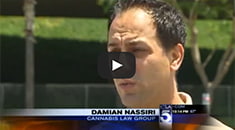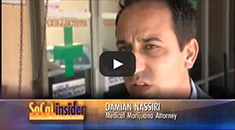AAA: Per Se Limits for Marijuana DUI Not Scientific
A recent study released by the AAA Foundation for Traffic Safety underscored what our L.A. marijuana lawyers have been saying for years: Per se limits of THC in a driver’s blood stream are not an accurate indicator of a person’s impairment level. 
Both proponents and opponents of greater marijuana access laws generally agree on the fact that those who are under the influence of the drug shouldn’t be operating a motor vehicle. It’s well-established that THC, the psychoactive substance in marijuana, has the potential to negatively impact driver performance (i.e., cognitive and motor abilities) and thus traffic safety. Where these two groups diverge is how we address this issue.
Understandably, lawmakers and traffic safety advocates want a solution that will keep marijuana-impaired individuals off the road. But the solution they reached is one that doesn’t make the roads safer and unfortunately may ensnare innocent people in criminal cases.
A per se limit is a designated amount of the substance in question which, if exceeded, is supposed to indicate impairment.
Per se limits work when it comes to alcohol impairment. Everywhere you go in the country, the standard limit for one’s blood alcohol limit is 0.08 units of mass alcohol per volume of blood. So there are 0.08 grams of alcohol for every deciliter of blood. The reason this system works for alcohol impairment is that alcohol is processed rapidly by the system. If someone tests high on that scale, chances are good that individual is not sober.
But marijuana is processed differently. THC may build up in one’s system and remain over time – even long after the cognitive and psychomotor effects of the drug have worn off. As our Los Angeles marijuana defense lawyers know, this means a person who regularly uses marijuana – say, for medicine – may have a high level of THC in their blood, but they aren’t in fact impaired.
Ultimately, per se driving limits make it a crime to operate a car while they have any detectable amount of marijuana in their system – even absent any other proof the driver was impaired.
The AAA study wanted to determine whether there was any proof that per se laws to prevent marijuana impaired drivers made sense. Researchers analyzed the records of 602 drivers who were arrested for DUI and in which only THC was present in the driver’s blood. Researchers also looked at 349 control samples and another 4,799 drivers arrested for DUI who tested positive for one or more cannabinoid.
They found that in comparison to the drug-free controls, those who were arrested for driving under the influence of marijuana tested more poorly in a number of psychophysical tests (finger-to-nose, one-leg-stand, walk-and-turn, etc.). However, in terms of figuring out a quantitative threshold for per se laws, researchers determined one “cannot be scientifically reported.”
These findings are in line with the U.S. National Highway Traffic Safety Administration (NHTSA) which has conceded that establishing a relationship between a person’s THC blood or plasma concentration and impairment is “inadvisable” when it’s based solely on the amount of THC in a person’s system.
The Los Angeles CANNABIS LAW Group represents growers, dispensaries, collectives, patients and those facing marijuana charges. Call us at 949-375-4734.
Additional Resources:
An Evaluation of Data from Drivers Arrested for Driving Under the Influence in Relation to Per Se Limits for Cannabis, May 2016, AAA Foundation for Traffic Safety
More Blog Entries:
Driver Allegedly High on Medical Marijuana Caused Crash Resulting in Trooper’s Death, June 1, 2016, L.A. Marijuana DUI Arrest Lawyer Blog
 Cannabis Law Group's Medical Marijuana Legal Blog
Cannabis Law Group's Medical Marijuana Legal Blog




